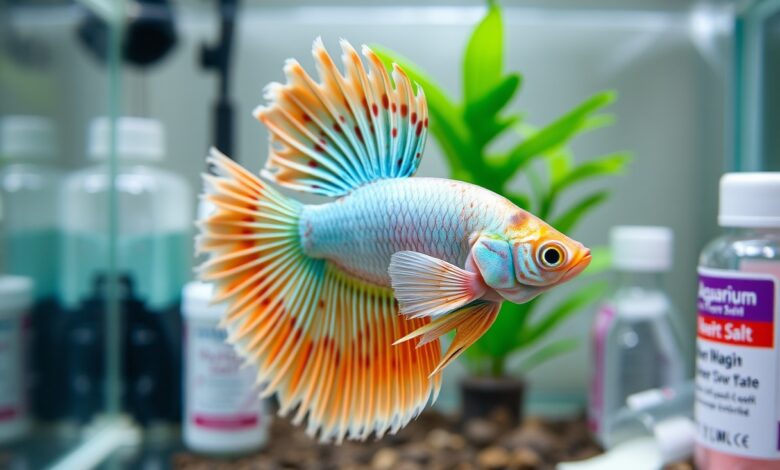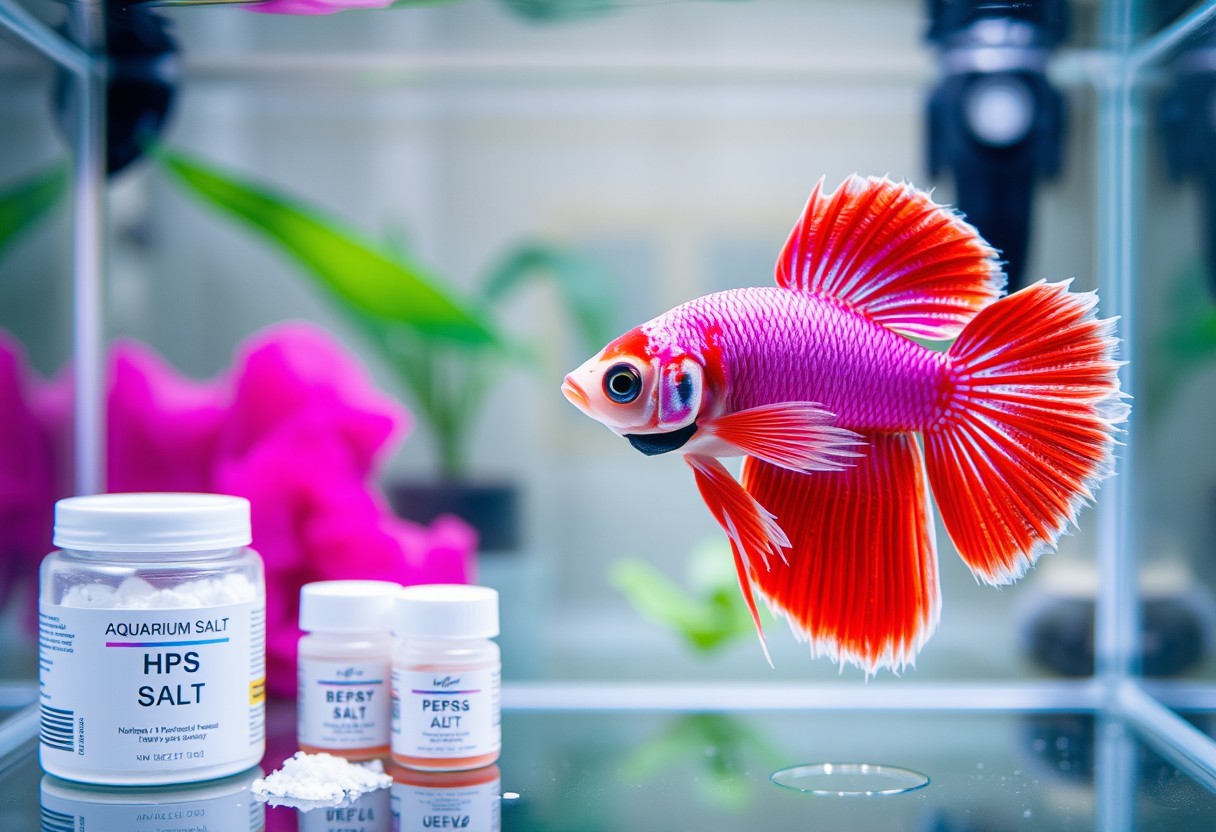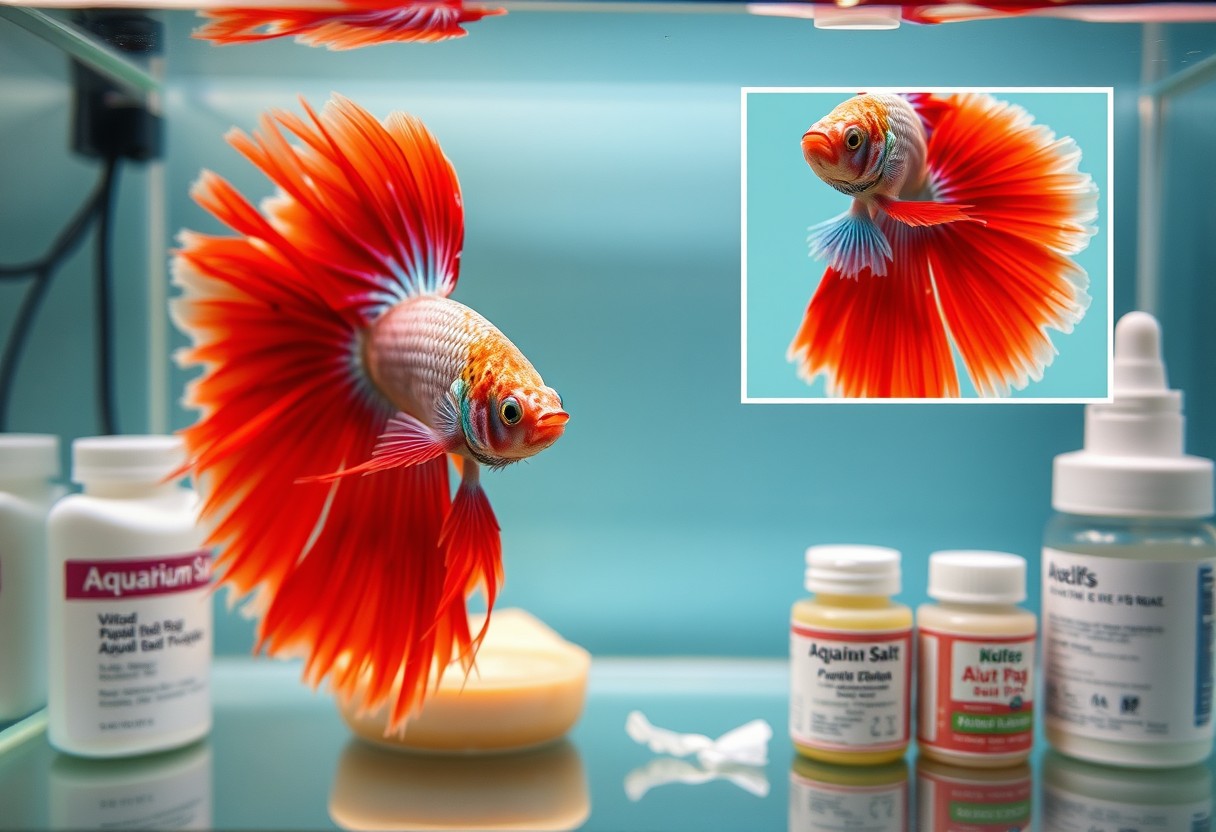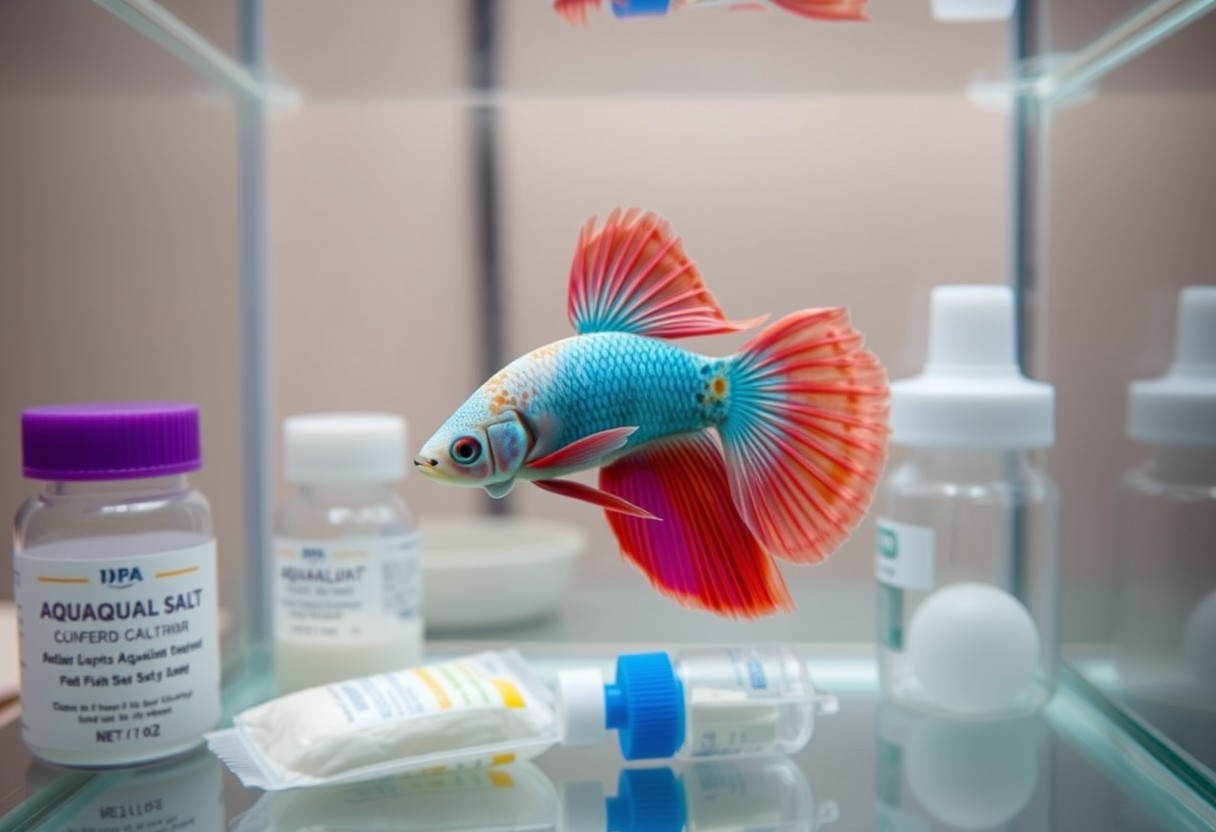Betta Fish Diseases – 5 Most Common Sicknesses

Fish keeping can be a rewarding hobby, but it comes with challenges, especially when your betta fish falls ill. Understanding the top five diseases for betta fish that commonly affect bettas will empower you to act decisively. From fin rot to ich, knowing the symptoms and effective treatments is vital for your pet’s health. In this guide, you will discover the signs of each disease and the steps you can take to restore your betta’s vibrant health, ensuring a happy and thriving aquatic environment for your fish.

Key Takeaways:
- Common Diseases: Familiarize yourself with the top five diseases affecting betta fish, including fin rot, ich, and velvet, to ensure timely identification and treatment.
- Prevention Strategies: Maintain proper water conditions, avoid overfeeding, and provide a balanced diet to minimize the risk of disease in betta fish.
- Treatment Options: Utilize appropriate medications and follow care instructions thoroughly for effective recovery from betta fish diseases.

Understanding Betta Fish Diseases
While betta fish are generally resilient, they can be susceptible to various diseases that may compromise their health. Proper knowledge of these ailments is imperative, as early intervention can dramatically increase the chances of recovery. Understanding the common signs and treatments will empower you to maintain a thriving aquarium environment.
Common Symptoms to Look For
You should always be vigilant for symptoms like changes in color, lethargy, or irregular swimming patterns. Other indicators include loss of appetite, fin clamping, or visible lesions. Identifying these signs early can help you take swift action to address potential health issues.
Importance of Early Detection
The sooner you recognize potential problems in your betta fish, the better their chances for a full recovery. This can help you avoid more severe illnesses and costly treatments down the line. (Developing a routine health check can be beneficial for your fish.)
A proactive approach allows you to implement necessary adjustments to your tank conditions, diet, or medication. Catching symptoms early can prevent the disease from spreading and affecting other fish in your aquarium. (Investing time in observing your fish regularly will save you stress and resources in the long run.)

Top 5 Betta Fish Diseases
Assuming you are a betta fish owner, it is vital to familiarize yourself with the most common diseases your fish might encounter. Early detection and treatment can prevent serious health issues. In this section, we outline the top five betta fish diseases that you should be aware of to maintain the well-being of your aquatic pet.
Disease 1: Fin Rot
For betta fish, fin rot is a prevalent bacterial infection characterized by frayed or deteriorating fins. This condition can arise from poor water quality, stress, and infections, all undermining your fish’s health.
Disease 2: Velvet Disease
Clearly, velvet disease is a severe parasitic infection that manifests as a yellowish-gold dust on your fish’s body. The parasite attacks the fish’s skin and gills, leading to serious health complications (prompt treatment is vital).
The disease is caused by a protozoan parasite that thrives in crowded or poorly maintained environments. You must maintain high water quality and provide sufficient space for your betta fish to help prevent this condition. Regular water changes and using a reliable aquarium cleaner can support your fish’s overall health (monitoring your fish’s behavior can lead to early detection of velvet disease).
Disease 3: Ich (White Spot Disease)
While ich, also known as white spot disease, is one of the most common illnesses in betta fish, it appears as small white cysts on their skin and fins. Early intervention is vital for effective treatment.
With ich, the protozoan responsible can multiply rapidly, spreading through the tank’s water. The sooner you recognize the signs, the better your chances of treatment success. Treating ich often requires elevated water temperatures and specific medicated baths (ensuring your fish receive prompt treatment can be lifesaving).
Disease 4: Swim Bladder Disorder
Diseases like swim bladder disorder can prevent your betta fish from maintaining proper buoyancy and swimming. It may lead to floating at the surface or sinking to the bottom (addressing this issue quickly can improve outcomes).
This disorder can arise from various factors, including overfeeding or constipation. Proper diet and feeding habits are key to preventing this condition. Consider offering fasting days or adjusting your feeding routine to ensure your betta fish’s digestive health (consult your aquarium expert if the problem persists).
Disease 5: Fungal Infections
Disease fungal infections typically appear as white, cottony patches on your fish’s body. These infections are frequently secondary to underlying health issues, such as injuries or poor water conditions.
Disorder correctly identifying the cause is vital when dealing with fungal infections. Isolating infected betta fish and treating your aquarium with appropriate antifungal medications can be beneficial. Keeping the tank clean and maintaining water quality is vital for preventing future outbreaks (avoid over-crowding to diminish stress and potential injuries).
How to Treat Betta Fish Diseases
Not all treatments are the same, so understanding the specific disease affecting your Betta fish is necessary for effective care. Start by observing symptoms and assessing the tank environment, as factors such as water quality and tank mates can contribute to illness. Your approach should be tailored, combining medication with proper husbandry to promote your fish’s recovery.
Treatment Options for Fin Rot
For fin rot, begin by isolating your Betta fish in a hospital tank. Treat the water with a broad-spectrum antibiotic and maintain optimal water conditions to promote fin regrowth. Regular water changes are also important to prevent the disease from returning.
Effective Remedies for Velvet Disease
Little could be more devastating than a velvet outbreak in your tank, as it affects your Betta’s overall health quickly. This organism, visible as a gold dust, may require you to quarantine affected fish and use medications designed specifically for velvet (consider UV sterilizers as a preventive measure).
This disease can multiply rapidly, so acting fast is necessary. You should monitor all tank inhabitants for signs of infection to prevent further spread (consider the use of copper-based treatments to combat velvet effectively).
Ich Treatment Methods
To treat ich, raise the tank temperature slowly to 82°F, as this speeds up the life cycle of the parasite. Combine this with the addition of an ich treatment medication for best results, ensuring a follow-up of water changes afterward to remove any leftover treatments.
As this parasite is highly contagious, you should also examine all tank mates for signs of infection to ensure no other fish are affected (considering a separate quarantine tank for new fish can help prevent future outbreaks).
Addressing Swim Bladder Issues
Disease of the swim bladder can lead to balance issues and floating problems in your Betta. To support recovery, adjust your feeding practices by offering high-quality, smaller food portions that are easily digestible, while also ensuring optimal water parameters.
To further address swim bladder issues, consider fasting your fish for a day or two before gradually reintroducing food (regular maintenance and monitoring water quality will greatly help in preventing these issues from recurring).
Fungal Infection Solutions
Treatment of fungal infections typically involves isolating the infected fish and applying antifungal medications to both the fish and their tank environment to eliminate spores effectively (consider salt baths as an alternative for minor infections).
Issues like poor water quality can increase the likelihood of fungal infections, so enhancing your tank maintenance routine is important (you should perform regular water tests to keep conditions optimal for your Betta’s health).
Tips for Maintaining Betta Fish Health
Now, keeping your Betta fish healthy involves a few crucial practices. Make sure to:
- Maintain clean water conditions
- Provide a balanced diet
- Conduct regular health checks
- Minimize stressors in the environment
- Monitor tank temperature
After implementing these practices, you will significantly enhance the well-being of your Betta fish.
Optimal Water Conditions
Water quality is vital for your Betta fish’s health. It’s crucial to maintain a stable temperature of around 76-82°F (24-28°C), along with a pH level between 6.5 and 7.5. (Inconsistent water parameters can lead to stress.)
Proper Feeding Practices
Little changes in feeding habits can greatly influence your Betta’s well-being. Your Betta fish benefits from a varied, high-quality diet that includes pellets, frozen or live food, and vegetable matter. Offer portions that your Betta can consume within a few minutes, as overfeeding can lead to health issues.
Optimal feeding practices ensure that your Betta receives the necessary nutrients for maintaining vital health. Make sure to avoid overfeeding, which can cause bloating and encourage bacterial infections. Supplementing their diet with regular offerings of live or frozen foods also promotes stimulation and activity, making for a happier Betta.
Regular Health Checks
Optimal health checks should be part of your routine when caring for your Betta fish. Observe your fish daily for any signs of illness, such as changes in behavior, color, or appetite.
Another important aspect of health checks is monitoring for signs of stress or disease, such as faded colors, clamped fins, or abnormal swimming patterns. Identifying and addressing issues early can prevent more severe problems and promote a long, healthy life for your Betta.
Factors Influencing Fish Health
For maintaining optimal health in your betta fish, various factors play a critical role. These include:
- Tank environment
- Water quality
- Diet
- Stress levels
- Infections and diseases
Any disturbance in these areas can lead to increased susceptibility to diseases and negatively impact your fish’s overall well-being.
Tank Environment
Tank conditions significantly affect your beta fish’s health. Providing a well-structured habitat with hiding spots, appropriate decorations, and appropriate space allows your fish to thrive. Avoid overcrowding and ensure your tank is properly cycled to establish a healthy ecosystem.
Water Quality Management
You must prioritize water quality management to ensure your betta fish remain healthy. Regular testing for ammonia, nitrite, and nitrate levels is vital.
Influencing factors like pH levels and temperature are vital for creating a balanced environment. Ensure that water parameters are stable, as fluctuations can lead to stress and health issues. Implement regular water changes to remove pollutants while conditioning water before adding it to the tank. Monitor chlorine and chloramine levels as well, as they can be harmful to your fish. Overall, maintaining quality water directly contributes to your fish’s vitality and longevity.
Conclusion
Now that you are aware of the top 5 betta fish diseases and their treatments, you can take proactive steps to ensure the health of your aquatic friend. Always monitor your fish for any signs of distress and act quickly if issues arise. For more detailed information, check out this 5 Most Common Betta Fish Illnesses (and How to Treat …. By staying informed and attentive, you can foster a vibrant and happy environment for your Betta fish.
Check out these links for more information on common diseases in Betta fish:
- The Spruce Pets – Common Betta Fish Diseases
- PetMD – Betta Fish Diseases and Treatments
- Love Your Fish – Betta Fish Health Problems
- Aquarium Co-Op – Top 10 Betta Fish Diseases
FAQ
Q: What are the common signs of fin rot in betta fish, and how can I treat it?
A: Fin rot is characterized by frayed or disintegrating fins, often with a darker edge. Other signs include lethargy and loss of appetite. To treat fin rot, it is vital to maintain optimal water conditions, including regular water changes and ensuring proper filtration. You can also add aquarium salt and use medicated treatments specifically designed for fin rot. It is important to isolate the affected fish in a quarantine tank to prevent the spread of the disease.
Q: How can I identify and treat ich in betta fish?
A: Ich, also known as white spot disease, presents as small white cysts on the fish’s skin, gills, and fins, along with signs of scratching against objects in the tank. To treat ich, you should raise the water temperature gradually (but not excessively) to speed up the life cycle of the parasite, making it easier to eradicate. Additionally, consider using an ich treatment medication available at pet stores and perform regular water changes to maintain good water quality.
Q: What preventive measures can I take to avoid common betta fish diseases?
A: To reduce the likelihood of diseases in betta fish, maintain a clean and properly filtered aquarium environment, perform regular water changes, and monitor water parameters such as pH and ammonia levels. Quarantine new fish before introducing them to your main tank, as this can mitigate the risk of introducing diseases. Providing a balanced diet, ensuring appropriate tank mates, and avoiding overcrowding can also boost your betta fish’s immune system and overall health.




